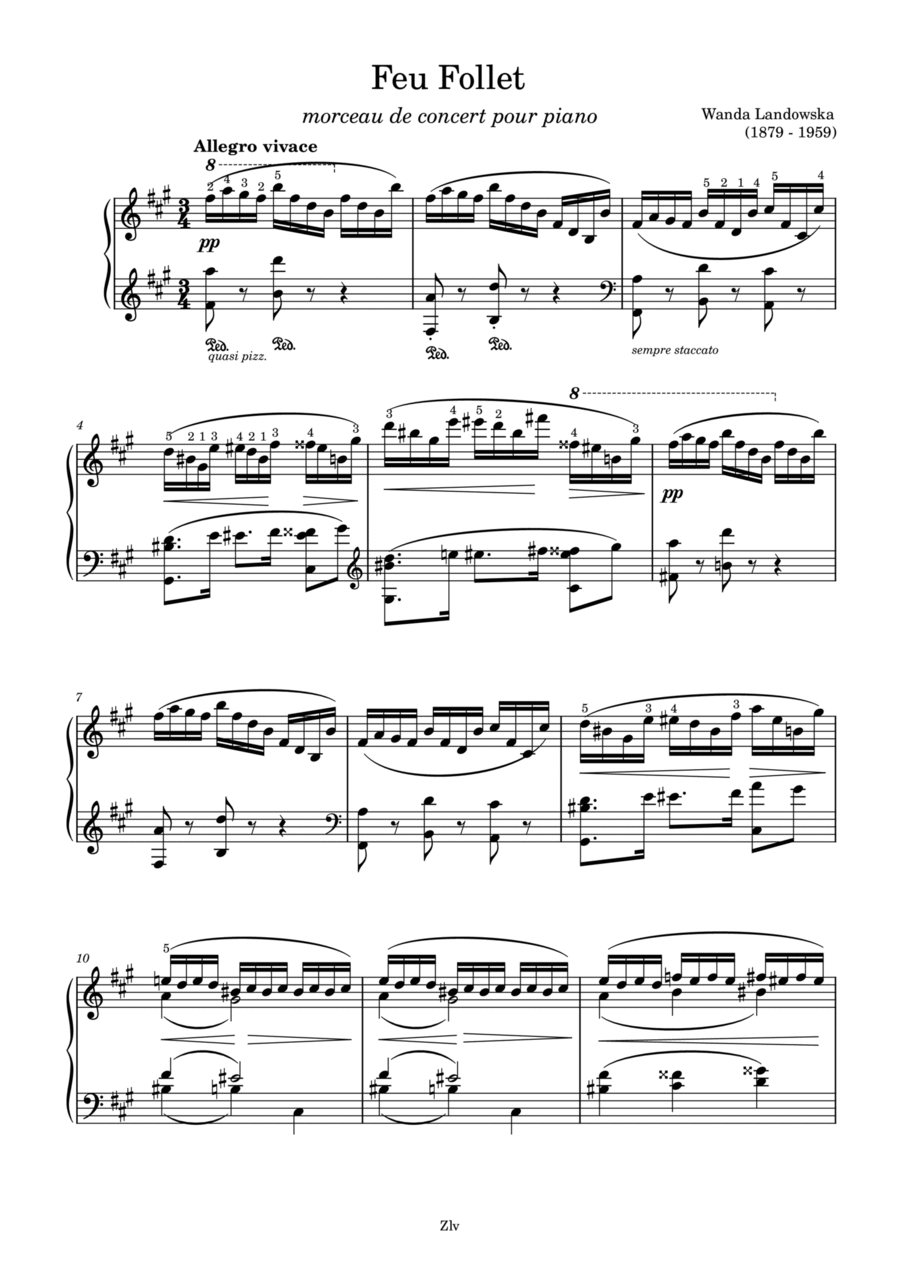Piano Solo - Level 5 - Digital Download SKU: A0.1281191 Composed by Wanda Landowska. Arranged by Zellev. 20th Century,Classical,Contemporary,Folk,New Age. Score. 7 pages. Zellev Music #872533. Published by Zellev Music (A0.1281191). Key Signature: Fâ?¯ minorTime Signature: 3/4Tempo: Allegro vivace (143)Difficulty: AdvancedWanda Landowska (July 5, 1879 - August 16, 1959) was a Polish harpsichordist and composer who led the revival of the popularity of the harpsichord in the early 1900s. She was one of the earliest advocates and scholars on historically informed performance practices, and she made the first-ever recording of J.S. Bach's Goldberg Variations on the harpsichord.Landowska was born in Warsaw in 1879 and started playing the piano when she was four years old. As a child, she studied with Jan KleczyÅ?ski and then Aleksander Michalowski. Kleczynski noticed in her lessons that she had an affinity for older Baroque music, and he didn't want to impose his sensibilities onto the already apparent musical prodigy. Consequently, her mother decided that Kleczynski was too lenient of a teacher and sent her to study with the stricter Michalowski, who was a Chopin specialist. When she was 16 years old, Landowska moved to Berlin to study composition with Heinrich Urban, but was discouraged by the rigid curriculum. However, while in Berlin she composed songs and orchestral works, and she met her future husband, Henry Lew. In 1900, the young couple moved to Paris and got married. There she became associated with the Schola Cantorum, and was introduced to Vincent D'Indy, Albert Schweitzer, and other prominent performers and musicologists of the era.Throughout the next ten years, Landowska toured Europe and Russia, and dedicated herself to researching the authentic performance practices of older music. Her husband assisted her in this research, and they often utilized libraries that they encountered while touring. She concluded that it's more appropriate to play Baroque keyboard music on the harpsichord rather than on the piano. By 1909, Landowska and her husband published the book Musique Ancienne, which was the culmination of all of their research regarding the performance practices of Baroque music. She also started teaching harpsichord classes in 1913 at the Hochschule für Musik in Berlin.Ten years later, Landowska made her debut in the United States, performing with the Philadelphia Orchestra conducted by Stokowski. Also in 1923, she performed in the world premiere of Manuel de Falla's El retablo de maese Pedro, where she met Francis Poulenc and asked him to write a harpsichord concerto for her. She also commissioned a concerto from Falla in 1925, which would prove to be a modern masterpiece. In 1929, Landowska performed the premiere of Poulenc's Concert champêtre in Paris. By this time, she had settled in a town north of Paris, and was teaching from her school L'Ã?cole de Musique Ancienne, which she established in 1925. She offered private and group courses and an annual summer concert series that was very popular. Landowska taught and performed in this capacity until 1940, when she had to abandon the school, her extensive library, and her home because of World War II. With the assistance of her student Denise Restout, she escaped to Portugal and then sailed to the United States, and eventually settled in Lakeville, Connecticut. She continued to perform and teach in the U.S., and at the age of 70 she recorded the complete Well-Tempered Clavier, which was highly acclaimed. Landowska was 80 years old when she passed away in Lakeville in 1959.
